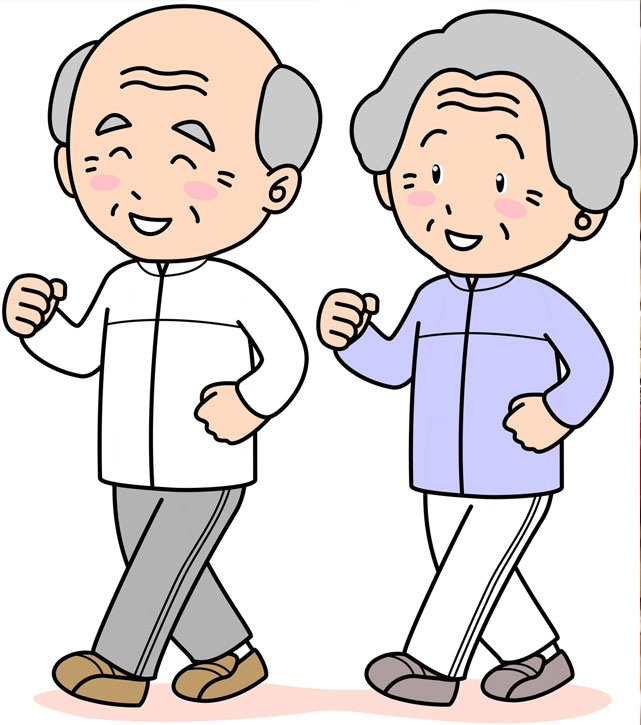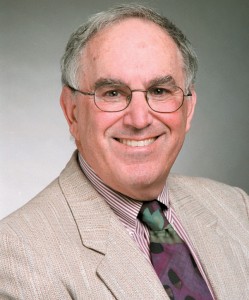When I started down the path of practising geriatrics in 1981, most people said either “Isn’t that nice” (meaning generous, good-intentioned and beneficent) or “Why would anyone as well trained as you want to spend their time on something as depressing as geriatrics?”
By Dr. Michael Gordon
At the time, only a handful of doctors were formally practising geriatrics in Canada. Contrary to popular belief, most of us felt the specialty was very attractive and full of warmth, personalities and stories—and often lots of humour. Over the years, many more physicians have joined the group, although sadly not as many as we
would like or need.
When geriatricians and other specialists are asked to identify the common reasons for decline in older adults, we tend to agree that age alone is not a sufficient explanation.
Age does, however, often play a role in why older persons present with a complexity of medical needs and concerns. Basically, they have had years to accumulate medical problems. The good news is that some of the most common, often disquieting, medical issues frequently respond well to appropriate interventions.
Here are 10.
1) Understanding heart disease
Heart disease accounts for a high percentage of ongoing illness in the elderly. This category includes ischemic heart disease (angina and myocardial infarction being the best recognized) and congestive heart failure (usually causing fluid retention leading to leg swelling and shortness of breath). There have been enormous advances in the prevention, diagnosis and treatment of these diseases, and the help of a cardiologist is often useful for more complex and difficult situations.
Learn to recognize the signs of a heart attack so you can react quickly to save a life: Visit www.heartandstroke.com. There are also many books available in libraries and bookstores that address the range of heart disorders that can affect older people, how the risk can be decreased and what treatments are available. Educating yourself will certainly be time well spent!
2) At risk of a stroke?
Strokes and related events affecting the brain are common in individuals over 60 years of age.
The risk factors include hypertension (high blood pressure), diabetes, high cholesterol and a history of smoking. Visit www.heartand-stroke.ca for stroke signs and advice regarding stroke prevention. The current general recommendations—at all ages—focus on lifestyle factors, including exercise and balanced diets with an emphasis on healthy food choices.
Strokes can be caused by intrinsic blood vessel disease or by blood clots moving from the heart to the brain in people with a condition known as atrial fibrillation. There are now good preventative treatments for the latter in the form of various types of blood thinners—something that should be discussed seriously with your doctor.
Living with and managing the care of an individual who has experienced a stroke usually requires a multidisciplinary team approach to rehabilitation and support on an ongoing basis. The focus should be on maximizing function, increasing safety and, wherever possible, enhancing life satisfaction.
3) Diabetes prevention and management
A million Canadians unknowingly have type 2 diabetes. Type 2 diabetes is most commonly diagnosed after the age of 40 years. Those with a family history of diabetes, heart disease or high blood pressure and those of Aboriginal, African, Asian, Hispanic or South Asian decent are at a higher risk. Over time, if left untreat-ed, the high sugar levels of diabetes can cause nerve damage in the hands and feet, and increase the risk of foot ulcers and ampu-tation. In addition, diabetes is a risk factor for other important conditions.
Diabetes is something that must be addressed, usually through a combination of lifestyle measures, such as an improved diet and increased exercise. Predominately oral medications are suitable for most older people, with a small number also requiring insulin. Advances in care mean that most people can control their diabetes well into their very late years.
Read more at the Canadian Diabetes Association’s website at www.diabetes.ca or ask your family doctor for advice—especially if you have tingling or numbness in your hands or feet.
4) Arthritis and other musculoskeletal disorders
The next high flyer on the list of medical prob-lems affecting the elderly comes under the heading of musculoskeletal (muscles, joints and bones) disorders. Probably the most disabling are the chronic arthritic conditions, especially affecting the large joints such as the knees and hips and the many joints and anatomical components of the back and neck, collectively called degenerative disc disease.
New surgical interventions for those with hip and knee problems can be almost miracu-lous in returning people to better function and decreased pain. The treatments are not so straightforward for backs and necks, although specific exercises or surgery on the back for something called spinal stenosis can be very helpful.
Good pain management with a wide range of analgesics and local treatments can be provided by physicians, physiotherapists and other healthcare professionals.
5) Hearing health check
When evaluating people with suspected cognitive impairment and dementia, I often say “If you didn’t hear it, you can’t remember it.” That statement highlights the importance of hearing in everyday life.
Many private hearing clinics offer free hearing tests. Advances in hearing augmen-tation—beyond just the well-recognized hearing aid—have provided some marvellous and discreet technology. Every older person with suspected hearing impair-ment deserves a proper evaluation by a credible hearing specialist, and prescrip-tions for a range of treatments that will enhance their hearing and enjoyment of life.
For both safety and quality of life, I recommend addressing any significant changes in hearing or other symp-toms related to the ear (e.g., ringing). Book periodic appoint-ments with the family physician for a check up and to avoid the buildup of earwax. If you or a loved one uses a hearing aid, make sure it’s worn and serviced properly, according to the manufacturer’s recommendations. And one last note: Batteries will need changing regularly; seniors often need a reminder or help with buying and installing them.
6) Vision-related healthcare
Although enormous strides have been made in eye care during the past few decades, the Canadian Association of Optometrists still estimates that one in seven Canadians will develop a serious eye disorder.
Cataract surgery, typically more necessary in those older than 65 years, is now a rapid, very safe and effective procedure that is usually conducted on a day-surgery, outpatient basis. Treatments for other eye diseases and conditions (e.g., glaucoma) have also improved enormously. Unfortunately, there is still a long way to go before an effective treatment becomes available for macular degeneration, which is the leading cause of severe vision loss in people older than 65 years.
For older adults, I recommend preventative eye care with regular examinations. People with diabetes should be seen by an ophthalmologist every two years or so, whereas those with minor medical conditions who just need glasses should usually see an optometrist. More urgent examination is indicated if there are new eye symptoms or rapid changes in vision.
7) Bowel complaints
So-called “irregularity” or, in medical terms, the persistent and uncomfortable problem of constipation, is high on the list of problems experienced by older adults. The reason I bring this up is that despite their universality, bowel issues are often dismissed by physicians as more of a “nuisance” than a “real” medical condition. However, they can become a huge focus of concern for the afflicted person.
Putting aside the many aggravating factors, the top causes of bowel complaints that must be explored first are anatomical problems such as tumours, which can block the colon or rectum and also cause bleeding and weight loss. A very common cause of constipation is medication used for chronic or acute pain, including opiates such as codeine.
My approach, after eliminating aggravating or causative factors, is a trial of my favourite breakfast combination of two-thirds oatmeal (rolled not quick oats) with one-third wheat, rye and flax cereal, topped with yogurt and fruit. It often achieves the regularity goal. If that alone doesn’t work then various combinations of fibre and fruit (e.g., prunes) can be added, as well as laxatives and occasionally suppositories. Relief is usually possible.
 Some older people have problems with fecal incontinence. These individuals are not able to recognize or control when they are about to have a bowel movement, which results in soiling or public accidents. This can occur following surgery to the lower bowel or with late-stage dementia. True incontinence of bowel movements is not as common as urinary incontinence. More often than not there is an issue with excessively loose bowel movements, difficulty in dealing with loose bowels and lack of agility to reach a washroom in good time.
Some older people have problems with fecal incontinence. These individuals are not able to recognize or control when they are about to have a bowel movement, which results in soiling or public accidents. This can occur following surgery to the lower bowel or with late-stage dementia. True incontinence of bowel movements is not as common as urinary incontinence. More often than not there is an issue with excessively loose bowel movements, difficulty in dealing with loose bowels and lack of agility to reach a washroom in good time.
Loose bowel movements have to be inves-tigated medically and sometimes the cause becomes reasonably clear. This might be excessive use of medications for constipation, poor diet or, more seriously, an anatomical partial blockage of the lower bowel that should be properly investigated.
8) Matters of incontinence
Incontinence is one of the on-going conditions that can most adversely affect quality of life. It not only causes discomfort and isolation but can also lead to depression. It is estimated that up to 3.3 million Canadians suffer from mild to extreme incontinence on a daily basis with women more likely affected. The female to male ratio is 2:1 and the condition tends to worsen with age. Stress incontinence associated with exertion like coughing or laughing is the most common type followed by urge incontinence, which occurs when a rapid over-whelming need to void the bladder leads to leakage. Underlying causes include neurological conditions, bladder infections, diabetes, stroke, smoking and, of course, decreased mobility and dexterity.
The first step to unravelling the challenge of urinary incontinence is to seek advice from a qualified healthcare professional. Some organizations have devel-oped multi-disciplinary continence clinics to address this common issue. Once evaluated, various approaches to treatment are often partially or completely successful. Treatments range from special exercises of the pelvic muscles, the use of female hormones applied locally to the vaginal area as creams or suppositories, the withdrawal of medications that may unnecessarily increase urine output and sometimes medications that decrease the tendency of the bladder to urgently contract and expel urine. This class of medica-tions (called collectively anti-cholinergic drugs) must be used under supervision and with great care in the older person (primarily women) because it can aggravate mental confusion and may cause severe dryness of the mouth and constipation.
9) Osteoporosis and you
Many older people have “thin bones,” a lay term for osteoporosis. Fractures resulting from osteoporosis are more common than heart attacks, strokes and breast cancer combined. At least one in three women and one in five men will suffer from an osteoporosis fracture during their lifetime. In fact, at least 80 per cent of fractures in people aged 60 years or older are related to osteoporosis. This trans-lates into a high risk of fracture of the hips, vertebrae (spine), wrists or arms.
Any fracture in an older person can severely impair their mobility and cause significant pain, which may require medications with secondary side effects. It is important to diagnose and treat osteoporosis and take steps to prevent falls. The range of recommendations varies with the person, individual risk factors and function. Specific advice can be obtained from healthcare professionals and special osteoporosis and falls clinics and programs, which exist in many jurisdictions.
Know your risk? Simply visit Osteoporosis Canada at www.osteoporosis.ca for fracture-risk checklists, as well as plenty of other helpful advice to prevent falls and fractures.
10) Recognizing cognitive impairment and dementia
Cognitive impairment and dementia (the most commonly recognized being Alzheimer’s disease) significantly impair the ability of many people to function independently. Sadly, more than 500,000 Canadians live with Alzheimer’s disease and other dementias. This often results in enormous challenges for family members and the healthcare system.
These conditions can be easily missed or denied in the early stages. Any person with suspected dementia should be carefully evaluated so that possible confounding factors and medical therapies can be explored with the physician.
For family caregivers, consideration should be given to use of day-care programs, in-home supportive help and the potential necessity for long-term care. Have discussions with knowledgeable healthcare and social service professionals. Keep in mind that not every-one will experience the same symptoms or progress at the same rate. It is,however, important to get a general idea of how abilities might change during the course of a disease such as Alzheimer’s.
A collective effort
Clearly, I haven’t reviewed every condition that might affect older people. But this summary should provide an outline of what to watch for, symptoms that might need to be brought to a doctor’s attention, and possible risk prevention and treatment tips. High on the list for all concerned must be a collective effort on behalf of everyone in your loved one’s life to reduce risk, and obtain appropriate guidance and treatment—while, of course, maximizing quality of life and function into the very late years.
Dr. Michael Gordon is Medical Program Director of Palliative Care at Baycrest Geriatric Health Care System.














